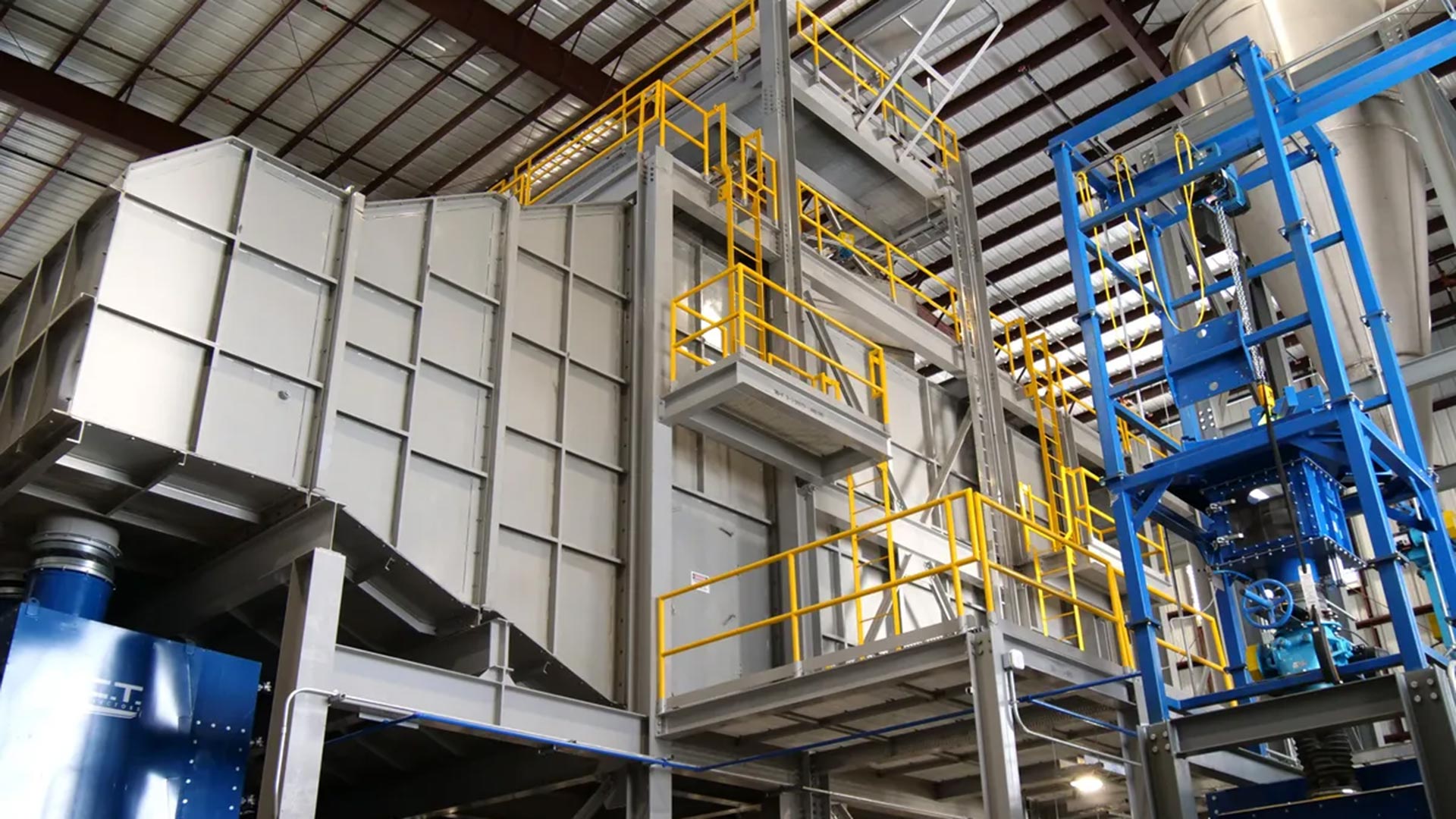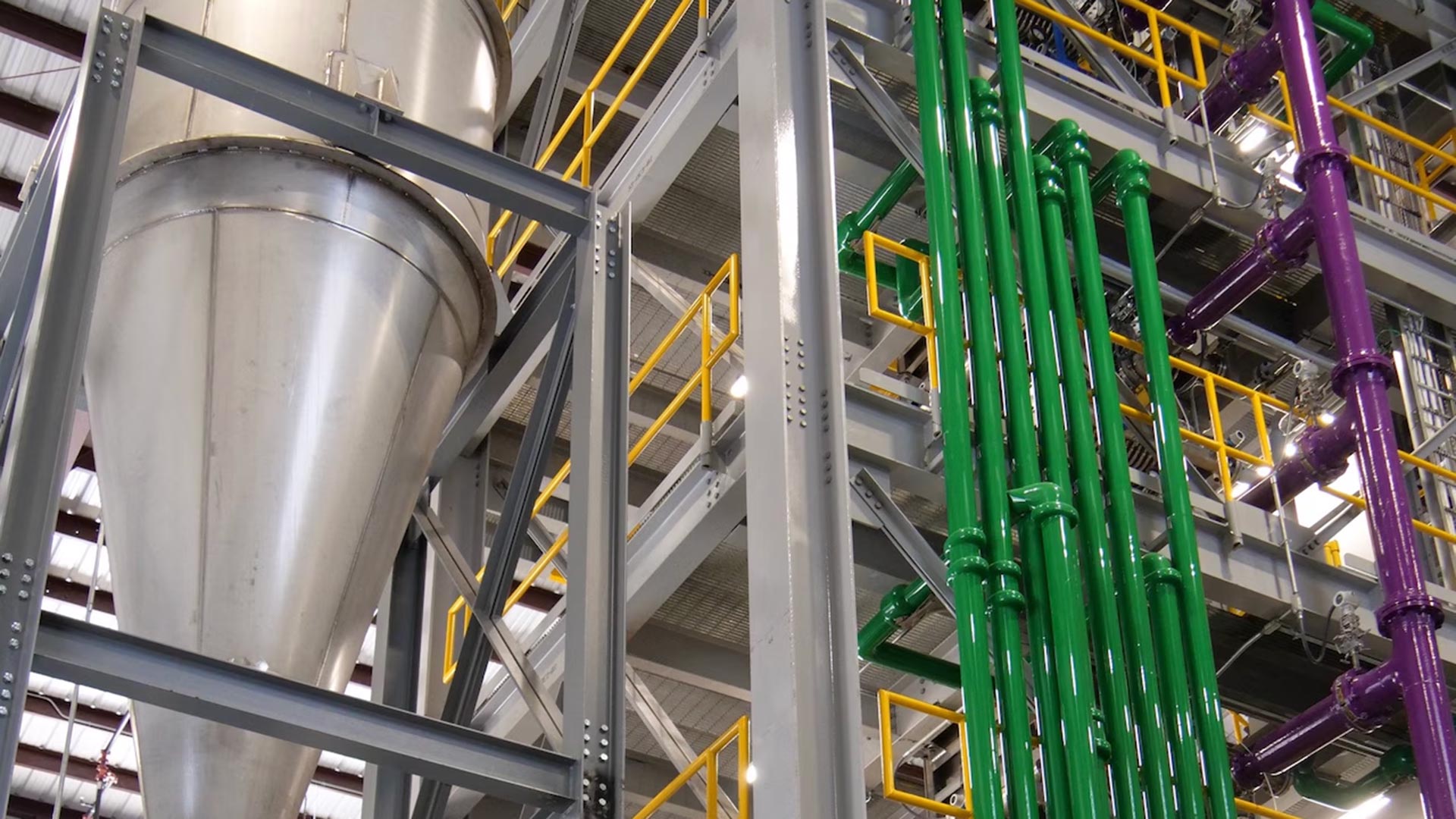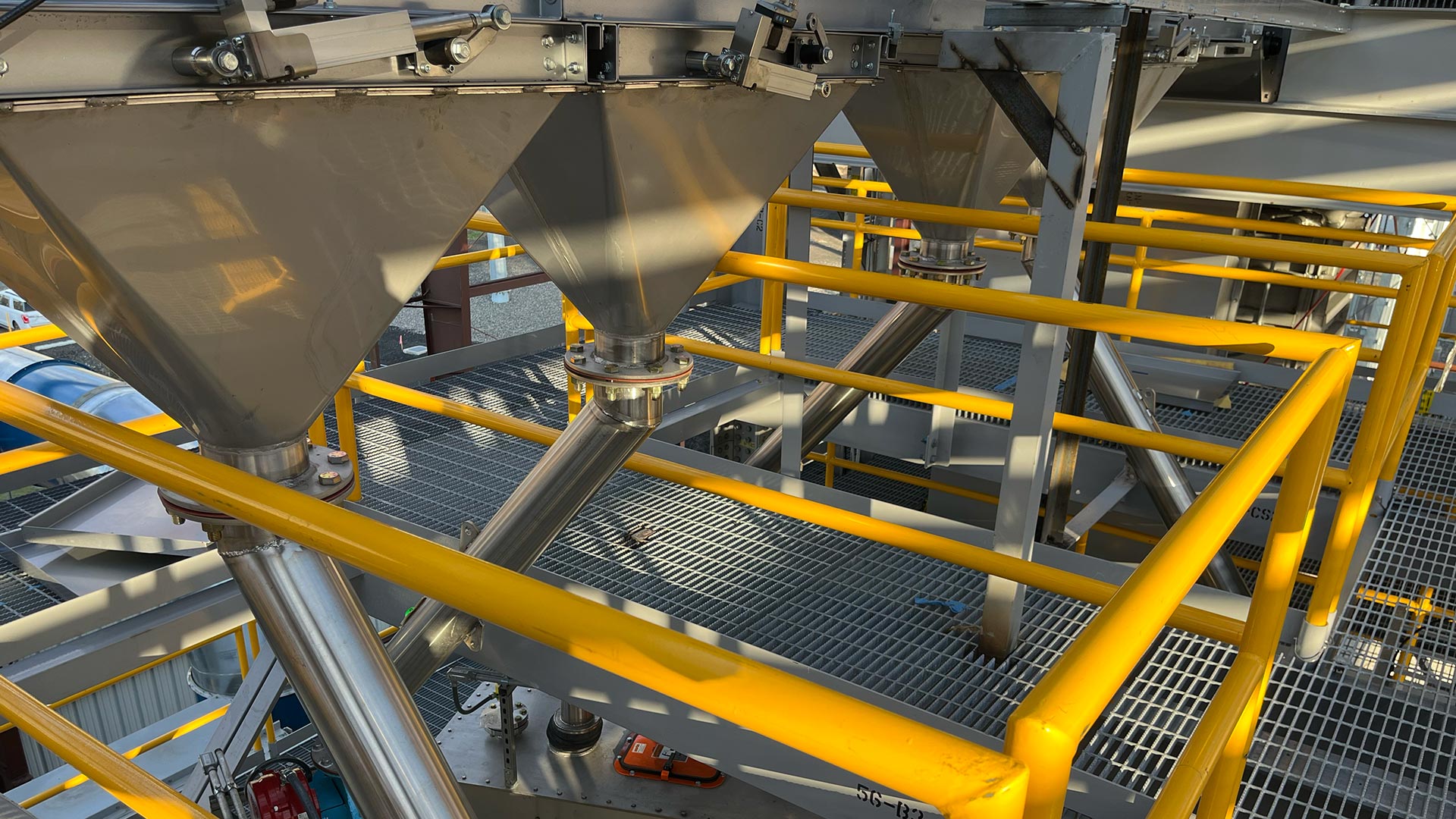BY Mike Rogoway
May 21, 2024
The Oregonian/OregonLive
280 Earth is trying out its technology — which sucks carbon out of the air — next door to Google’s riverfront data centers in The Dalles.
But this facility is built specifically to undo what other factories have done.
A Silicon Valley startup called 280 Earth has begun sucking carbon out of the air from a site overlooking the Columbia River, hoping to demonstrate it has a new technology for fighting climate change. Spun out from Google, 280 Earth has already spent $13 million at the site and plans to spend $7 million more as it builds out the testing phase of its project.
Located next door to one of Google’s riverfront data centers, 280 Earth hopes to use “waste heat” from its neighbor and corporate cousin to power its own operations. It’s also hoping to win some of the same tax breaks Google’s data centers enjoy.
On Monday, 280 Earth announced it has raised $50 million from private investors to continue developing its technology. If things go well with its initial tests, 280 Earth could spend $130 million more in The Dalles in the coming years.
The company hopes to prove its carbon capture technology is commercially viable and begin attracting bank loans and more outside financing so the company can begin pulling in carbon on a massive scale.
“That’s when the breakthrough occurs,” said CEO John Pimentel. “We believe it will happen literally in the next few years. And that’s why we’ve invested in The Dalles, is trying to break through that early-stage exploration.”
TRYING EVERYTHING
280 Earth’s name refers to 280 parts per million, the concentration of carbon dioxide said to have been in the atmosphere before the industrial revolution. That concentration is over 400 parts per million now and climbing, thanks to ongoing carbon emissions.
Climatologists forecast the elevated carbon dioxide already in the air will continue warming the planet for millennia.
So some have come to believe people need to do more than just reduce carbon emissions. They say people should also be trying to undo some of the damage humans have already done to the atmosphere.
“We have to do everything we can,” said Portland State University geology professor Jonathan Fink.
Carbon capture work like 280 Earth is trying remains commercially unproven, he said. It’s analogous to where solar or wind power were decades ago, and Fink said it’s too soon to know what techniques are most effective and economically viable.
“I don’t have a clear picture of what this is going to end up looking like, but I do understand how every other technology has needed to evolve slowly at first,” Fink said. “I’m hopeful this will be part of the solution.”
So he said it’s good there are private companies like 280 Earth, backed by wealthy investors, helping shoulder the cost of experiments into these climate-saving technologies.
“There are dozens of different approaches are being tried,” Fink said, “and I think we should be trying as many of them as we can and hope that one or two of them really take off.”
MOONSHOT FACTORY
It’s a process fraught with unproven ideas and major drawbacks. Taking carbon out of the atmosphere is itself an energy-intensive process. And then there’s the problem of what to do with all that carbon once it’s no longer floating around in the air.
280 Earth says it has developed a proprietary material, a dry sorbent, that can absorb carbon from the air at lower temperatures than other technologies.
And it says it can use heat generated by Google’s data centers so 280 Earth can limit its own energy use. As a byproduct of its process, 280 Earth also captures water from the atmosphere that can then be used locally.
If its technology works in The Dalles, Pimentel said 280 Earth envisions building modular sites next to large industrial operations all over the country, using heat from those operations to recapture carbon.
280 Earth takes on the expense of moving the waste heat from adjoining facilities to its own, reducing what those other operations spend in money and energy on their own cooling.
“That can be a power plant, an oil refinery, a data center, anything that generates waste heat and has a cooling capacity,” he said. “When we can find those situations, it reduces the amount of electricity our system needs and it creates a benefit for our neighbor.”
280 Earth emerged from a Google-sponsored idea lab called “X, the Moonshot Factory.” The organization aims to take unproven “moonshot” ideas like household robots and aerial drone delivery services and provide funding and technological support to make them into practical businesses.
Google’s parent company, Alphabet, owns an unspecified but “significant” stake in 280 Earth, according to the company. Other backers include private investment firms and wealthy technologists including the San Francisco firm Builders VC and Gideon Yu, a veteran Silicon Valley finance executive who is now part owner of the San Francisco 49ers.
280 Earth has just launched the first phase of its work in The Dalles, testing the viability of its basic ideas with a half-dozen employees on site. This first phase aims to capture carbon at an annual rate of 500 tons, which the company says is equal to emissions from 100 cars.
“We should have a clearer idea as to whether the technology is performing as we hoped” by the end of summer, Pimentel said. He’s a longtime sustainability advocate in California who has worked in the wastewater and clean energy sectors for more two decades.
If 280 Earth hits its initial targets then the company could move into a second phase, spending another $40 million in The Dalles on a prototype module that could capture 10 times more as much carbon.
Continued success could bring more an additional $90 million in spending to build two more modules.
“I think it’s delightful to have them looking at The Dalles,” said Dan Spatz, the city’s economic development officer.
“We all know we’ve got to do something about global warming,” Spatz said. “What they’re doing is a drop in the bucket. But it’s a drop in the right direction.”
WHO PAYS?
280 Earth is negotiating for enterprise zone incentives that could partially exempt it from local property taxes over five years. The company says those incentives are crucial to its continued development in The Dalles, while it is conserving cash and proving itself.
Eventually, 280 Earth envisions building massive plants that could capture 1 million tons of carbon dioxide annually. Those sites would be large enough to begin making a dent in atmospheric pollution, but at 250 acres apiece, they are also far larger than any industrial land available in The Dalles.
280 Earth plans to capture carbon dioxide from the atmosphere in liquid form, then ship it by truck or rail from The Dalles to injection wells in the Midwest or South. There, it could be piped deep underground and contained permanently beneath geologic formations.
If 280 Earth eventually moves to large-scale carbon capture, the company hopes the carbon dioxide could be injected into basalt rock formations underground where it would form calcium carbonate for permanent sequestration.
It’s far from clear who would pay for the carbon capture and disposal.
Perhaps governments would place limits on industrial climate emissions, so businesses would pay 280 Earth and similar companies to recapture their emissions. Or maybe companies would do so without government mandates, the way some businesses now pay to finance solar arrays so they can use renewable power for their operations.
“That’s what gives us the hope that we can recover the capital that we’ve invested into building these machines,” said Pimentel. “There would be a future where that regulatory marketplace or a regulatory regime comes in to regulate carbon. I think that’s quite possible. In fact, I think it’s quite likely as people wake up to the reality of what overcarbonating our atmosphere is doing to our climate.”





